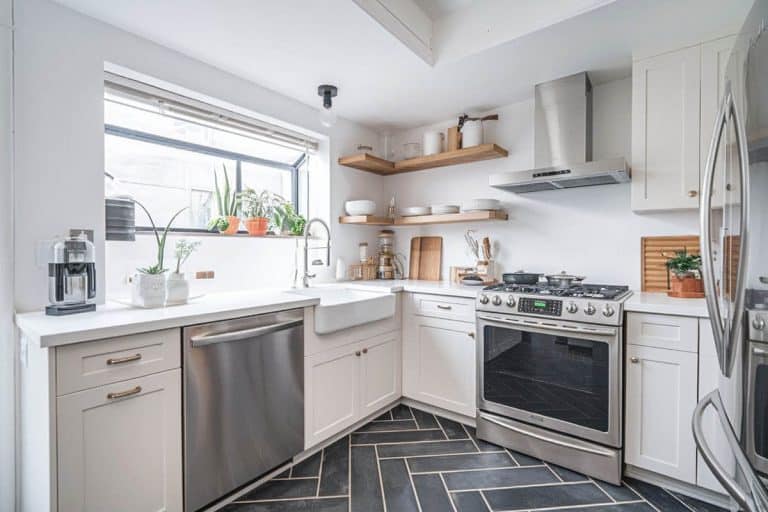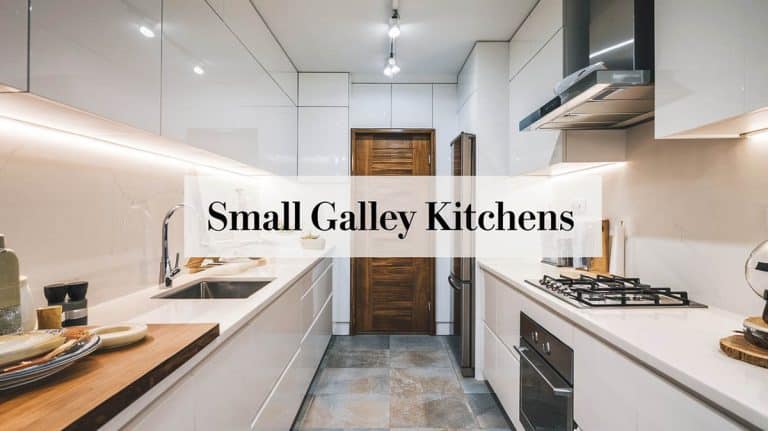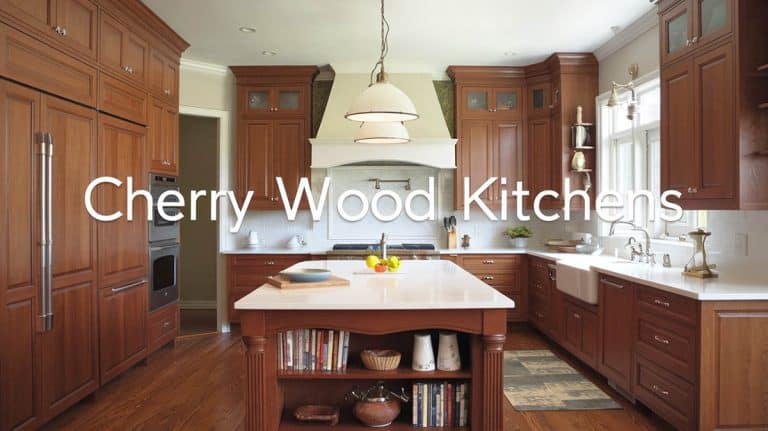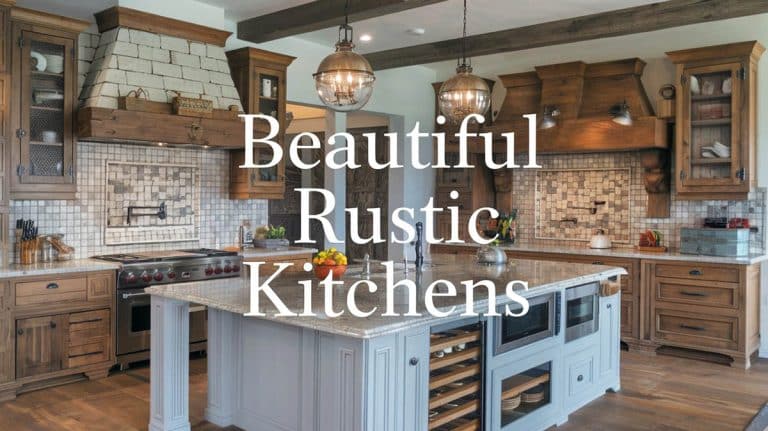Why Zellige Tile Backsplash Is Trending in Kitchen Design
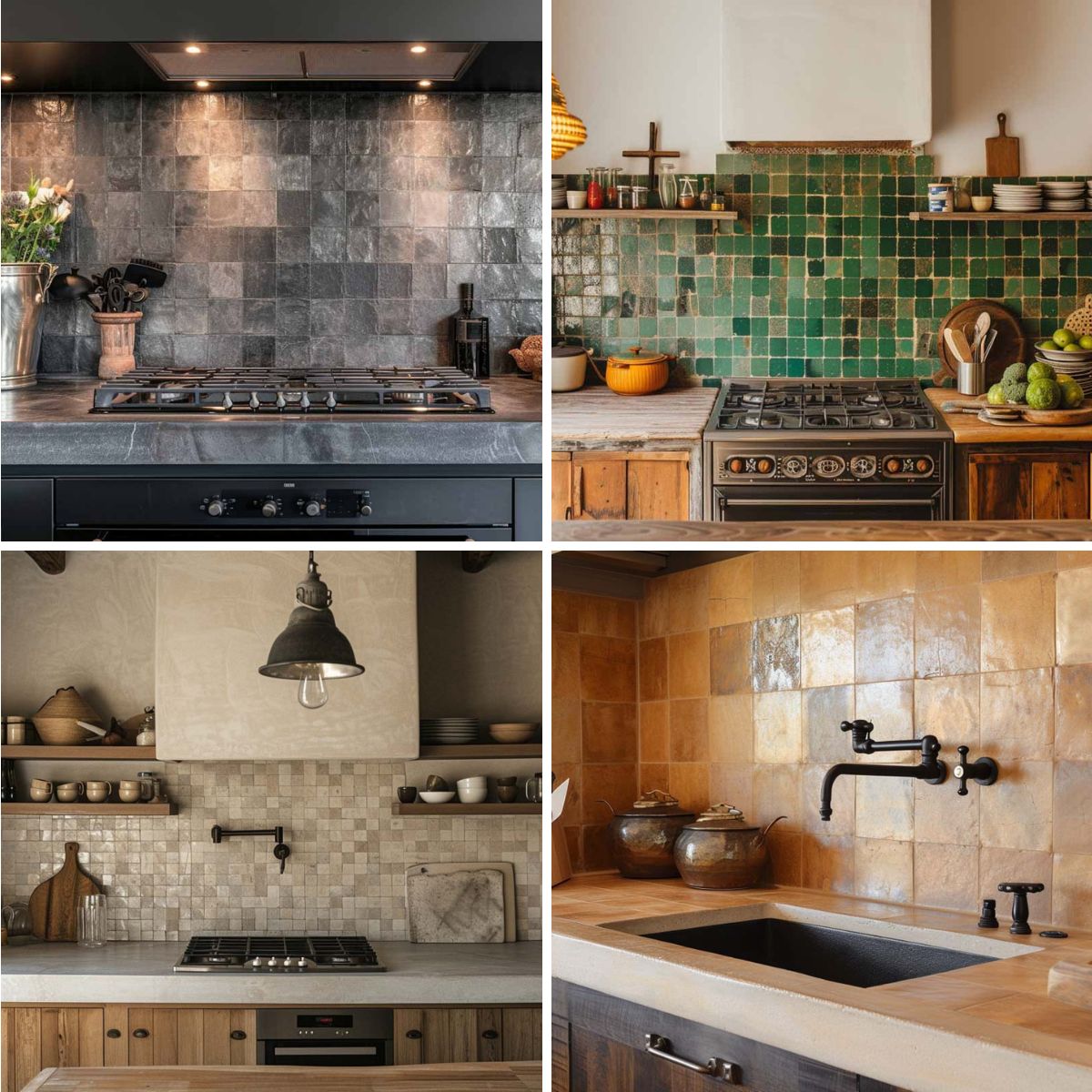
With an enamoring display of colors and patterns, zellige tiles have been an art form that bejeweled the facades and interiors of Moroccan dwellings for centuries. Today, these tessellations can be an alternative to conventional styles but with simpler geometry, giving a grounding and organic quality to modern interiors. From your classic 4″ x 4″ jack-on-jack pattern to the 2″ x 6″ picket fence pattern and the more complex insets, there’s a perfect zellige tile backsplash to spruce up your kitchen or bathroom interior.
The backsplash in a kitchen or bathroom usually creates a focal point, and choosing the zellige tile involves thoughtful consideration of various factors, including color, pattern, and overall design aesthetic. Get to know more about these amazing Moroccan tiles and find out why they are trending in kitchen design.
What Is Zellige Design Tile?
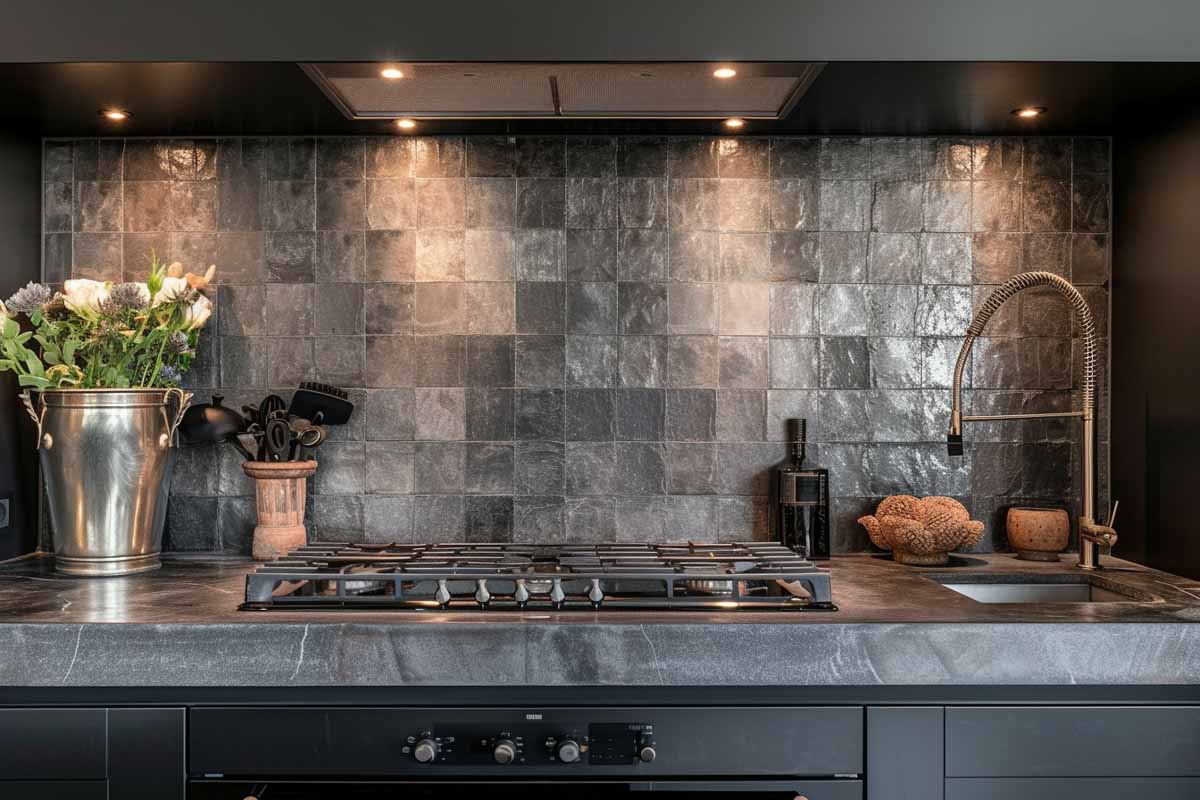
The zellige design tiles are not really a new concept, they are finishing applications made using centuries-old Moorish techniques. They differ from commercial manufactured products today because each tile has an uneven surface due to the handmade process. Also, you’ll find the edges angled or beveled inwards, which are cut using a putty knife-like tool guided with a solid block with the desired angle.
The block, usually made out of solid metal, serves as a guide placed on top of the tile. The crafter slides the putty knife downwards against the block and cuts through one side of the tile. This step creates the angled edges.
Zellige tile’s angled edges are the only feature uniform about the surface since each piece is glazed and tinted manually, resulting in variations of the degree of color and glazing. The undulating surface, varying sheen, hues, occasional pits, and seldom hairlines make it stand out against other modular building materials.
Distinct characteristics:
• Heterogenous in surface appearance.
• Edges are beveled inwards towards the Substrate.
• Glazed finish.
• Groutless or with Thin Grouting
• Geometric and Interlaced Patterns or Monochromatic
• Most products are bought per box, each box usually contains 60 or 100 pcs.
In interior design, a Zellige tile backsplash is not merely a functional element but a work of art that tells a story of tradition, craftsmanship, and the timeless beauty of Moroccan design. The following discussions will delve into the considerations, design possibilities, and maintenance aspects of incorporating this backsplash style.
Types of Zellige Backsplash Tile
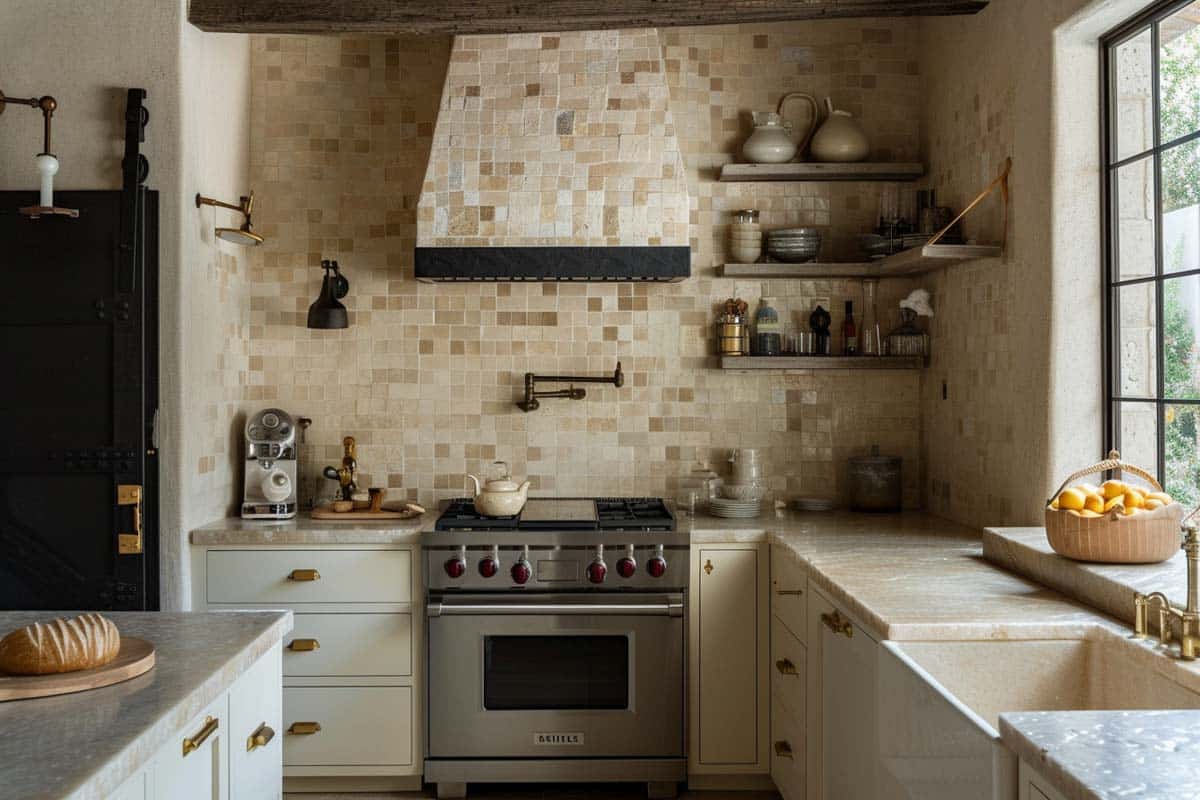
There are actually two general types of zellige tiles in the market. The first type is purely handmade and is closely made using age-old techniques with simple tools. The second type is mass-produced using relatively simple tools such as a clay mixing machine or grinding and polishing equipment.
The former type of zellige tile costs almost thrice as much as the mass-produced version. Another type of grouping are glazed and unglazed. Traditional production have always been with a glazed finish. There are suppliers who term the finish metallic zellige.
Shape and Layout
The Classic 4-inch x 4-inch White Zellige Backsplash Tile: When you have a set of tiles with many irregularities, a clean and light color with a square shape can make it classy and prevent too much going on in one surface. The white color is also easier to mix and match with existing elements while it showcases the beautiful undulation of the surface that changes under different lighting conditions using natural light or lighting fixtures.
Octagon Shaped with Square Insets: Whether going for a vintage or a revival of the art deco style, the octagon-shaped zellige tiles with square insets can add character to your kitchen or bathroom space. You can choose to have one, two, or multiple colors in one square foot of design.
Subway Tile: The Zillege subway tile adds visual interest to the well-known tile layout with its undulating surface. Moreover, it’s a groutless install, so you’ll have a glazed backdrop that can still look sleek and neat even in a busy kitchen.
Picket Fence Shape: A variation of the subway tile that gives the kitchen or bathroom backslash rhythm and character, Zellige in picket fence can either be installed vertically or horizontally. Like the subway style, it’s effective in giving visual trickery by elongating horizontally or making the space visually taller.
Elongated Diamond or Rhombus Pattern: A popular pattern to lay out your colored mosaic is with the elongated diamond pattern. The layout is similar to the harlequin pattern, but the diamond stands on one point of the shorter span of the rhombus. Try light pink color backsplash paired with a light cream or white countertop complemented with wood shelves or cabinet for that chic Scandi style.
Mosaic Tile: Traditional zellige styles actually come with colorful and intricate patterns. But because of the demand for a more minimalistic type, you’ll mostly find these in simple square or rectangle patterns with a monochromatic color. However, you will find numerous designs with mosaic patterns that are perfect for adding patterns to your backsplash.
Fish Scale Backsplash: Shaped like fish scales, these create a unique and visually interesting pattern when installed. They are popular for creating a focal point in a backsplash and adding a touch of charm.
Border Tiles: These narrow strips or long listello can be used as borders or accents within a larger tile installation. They can create a frame around the backsplash or highlight specific areas.
Custom Patterned Tiles: Some manufacturers or artisans offer the option to create custom patterns and designs. This allows for highly personalized varieties of kitchen backsplash or designs that can be used in a bathroom that suits your unique style and preferences.
Zellige Thickness
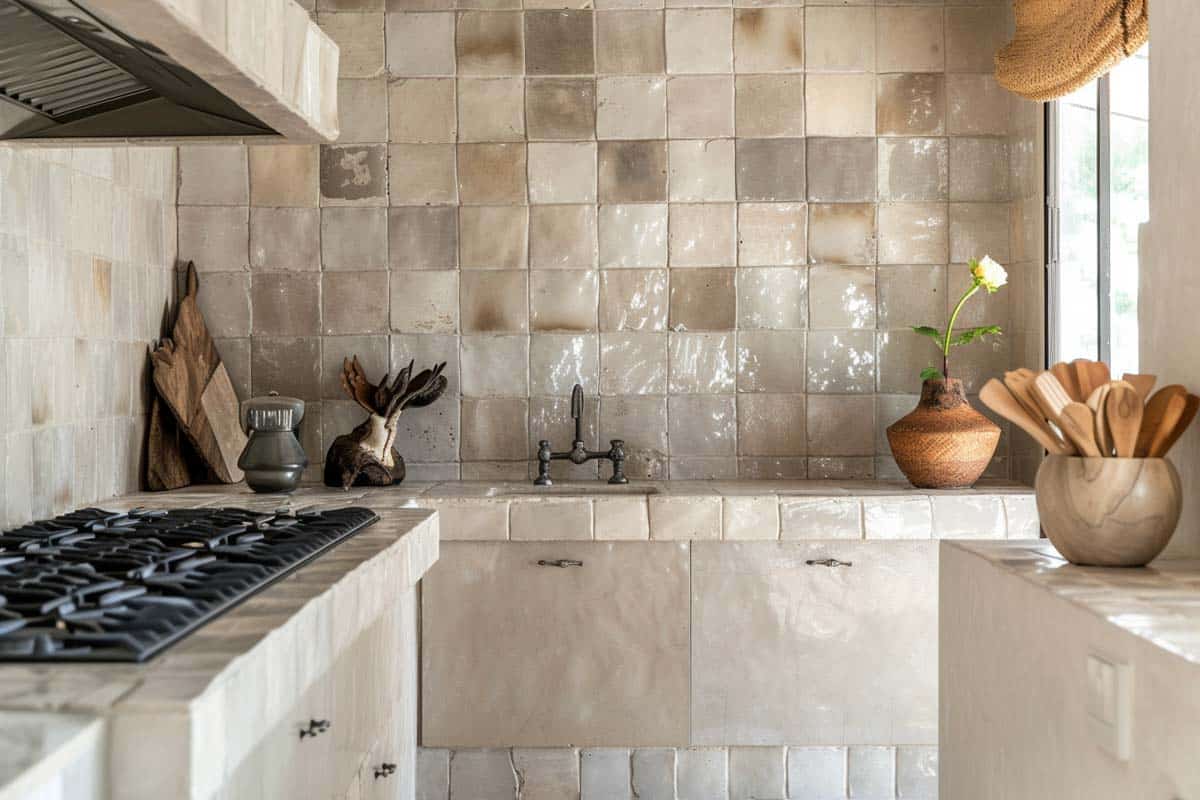
Compared to commercial tiles such as ceramic tiles with a thickness of 6 to 10mm, zellige tiles are much ticker, around 15 to 20mm. At the same time, they are around twice as thick as ceramic. Natural stone has the closest thickness of 10mm to 25mm.
Take note, though, that zellige tiles, especially those that are totally handmade, will have slight differences in thickness but still from the range of 10 to 20mm. Also, manufacturers and suppliers will have each of their own product thicknesses, so it’s best to get an extra 5% of your total material needed in-store just in case a tile or a section of the wall gets damaged.
Zellige Cost

Truly handmade zellige tiles undergo tedious processes and take longer to make compared to your commercial products. Handmade tiles typically cost around $10 to $100 per square foot, depending on the intricacy of the design.
According to Adil Naji, president and founder of Arabesque Incorporated, who specializes in Moorish architecture, a basic 36-piece mosaic is the most affordable, which can cost around $10. However, a mosaic with crosses and stars can cost four times the basic square mosaic because of the intricate design. Interlaced design, meanwhile, can cost $100 per square foot.
Pros and Cons of Zellige Backsplash

Like any other type of tile, zellige backsplash has pros and cons. Knowing more about these can set your expectations on the installation.
Pros
An Attractive Ombre Effect as a Backdrop: Traditional types are colorful and usually composed of several pieces to create one large piece that is painstakingly assembled by hand by artisans. The mosaic’s boost in popularity is more due to the one-color or monochromatic tiles that create that ombre or gradient effect since the tiles have varying tones.
This can have a dramatic effect when varying degrees and position of light illuminates the backsplash, giving character and life to your modern kitchen designs or bathroom styles.
Kiln-dried Twice for a Long-lasting Backsplash: Unlike most kiln-dried clay tiles, zellige is traditionally baked twice in a traditional oven during the process. This allows the special clay from Fez to lose moisture completely and makes the composition of the material more stable.
Aside from undergoing the kiln-drying process, they are hand-pressed using a flatting tool that further increases the compact nature of the application. These processes increase the tile’s density, thus making it stronger and unlikely to break or fracture easily even under temperature changes or subjected to extreme heat or cold.
Color Doesn’t Fade but Gets More Vibrant Overtime: When you build and furnish the kitchen or bathroom, you would probably want the materials and equipment to last. This makes Zellige a reasonable investment despite the higher cost of the finish.
Zellige tiles are hand-molded, hand-cut, and hand-glazed clay tiles that have their own mixed history, derived in part from imperial Rome. – Jungalow: Decorate Wild, Justina Blakeney
As mentioned, they undergo the traditional kiln-drying; this traditional firing of the surface infuses the glazing and coloring into the clay, which will unlikely to flake or fade even when exposed to UV light. Instead, oxidation helps the metal oxides in the glazing material deepen the color, and the effects of sunlight and temperature also help enrich the existing pigment.
Your Backsplash Still Looks Good After Decades: In connection to having a backsplash that increases the vibrancy of its color over time, the natural surface wear can eventually thin out the glazing.
Because the tiles have natural imperfections on each piece and varying tones, the changes are not noticeable at all, unlike a smooth surfaced style, for instance, that has a monochromatic color since it would be obvious if there are chipped or fading colors in some areas.
The Perfect Backsplash Behind a Stove or Range: Like other kiln-dried tiles, these won’t easily crack or discolor under high temperatures. This makes it safe behind stoves or kitchen hoods, as the finish material protects the wall or Substrate underneath.
Sudden Temperature Changes Won’t Crack the Tiles: Quality-made products, especially when made following the traditional method, won’t crack under temperature changes. You’ll see in most technical data sheets that Zellige tiles have a thermal shock test. If there are no observed defects on the materials tested, then you’ve got a very durable product.
You get a Groutless Backsplash: A modern design be it a kitchen or bathroom style love groutless tiles. The wall surround makes it look more up-to-date and luxurious. No more worrying about grime-filled grout, which means less maintenance.
Strong bond to the Substrate: Because the designs have that inward bevel, these Moroccan tiles allow the adhesive to go between each piece without the need for grout showing on the surface. The profile makes a sturdy adhesion to the backing of the material.
Perfect for Achieving a Unique Luxury Tile Layout: Whether you opted for the monochromatic or intricate tile pattern, their glazing can add an eye-catching feature that’s unique to your sleek and smooth conventional tiles. There are a good number of interior designers and decorators who have explored their use in luxury businesses, such as in Austin Proper Hotel, where Kelly Wearstler, a popular interior designer, provided a wall covering using zellige tiles.
No Harmful Fumes Released in the Air: Most of these products have low VOCs, and because it is a groutless install, the edges are flushed and have a dense material that is less likely to leak through.
But do check on the technical details of the product. If you’re aiming for a green certification from a body such as BREEAM or LEED, you’ll find many types with exemplary levels or have a passing mark.
Cons
You’ll have an Expensive Upfront Cost for a Backsplash: The most basic design of zellige, like the square monochromatic tile, can cost $10 to $15 per square foot. At the same time, you’ll find $1 to $5 per square foot terracotta tiles (also a kiln-fired type) on the market.
Delivery and transportation costs for these products can also add to the cost since genuine zellige is usually shipped overseas. But it is very durable, and its aesthetic value makes it a valuable investment. If you have the budget or need a luxury tile, then a Zellige backsplash is a great choice.
Cleaning the Surface Can be Time-Consuming: While these applications are installed without grouts in between, the undulating surface with occasional pits can accumulate dirt and grime.
Also, you’ll likely have edges that come with varying levels, causing an adjacent tile’s edge to stick out slightly when a piece with a lower edge succeeds it. These raised parts can easily accumulate dirt, so regular cleaning may be needed for these groutless tiles.
Not a Good Idea for a DIY Project: Because of the unique profile of the textured surfce and structure, the finishing material should be laid out by an installer who is familiar with or an expert in Zellige tiles. Aside from the uneven and beveled edges, intricate mosaics will need an expert tiler.
Can be Difficult to Obtain for Large Projects: If you’re laying out an expansive backsplash or want to use it in several number of units with the same style, you need to order a batch in advance. There is also a limited number of styles to choose from depending on your location and accessible suppliers. However, you’ll find mass-produced options, but most of these products have less durability and quality overall.
Not Getting Genuine Zellige Tiles: Since there is a 500% increase in the demand for these products on the market, many tile companies are taking advantage of this need. This is where the mass production comes in.
These are versions of the Moroccan art form that use added machinery along some handmade steps to produce faster and more product. These options are usually less durable and may not match up with the desirable characteristics of the handmade materials. Be sure to only get your zellige tiles from experienced and trusted suppliers.
Does Zellige Need Grout?
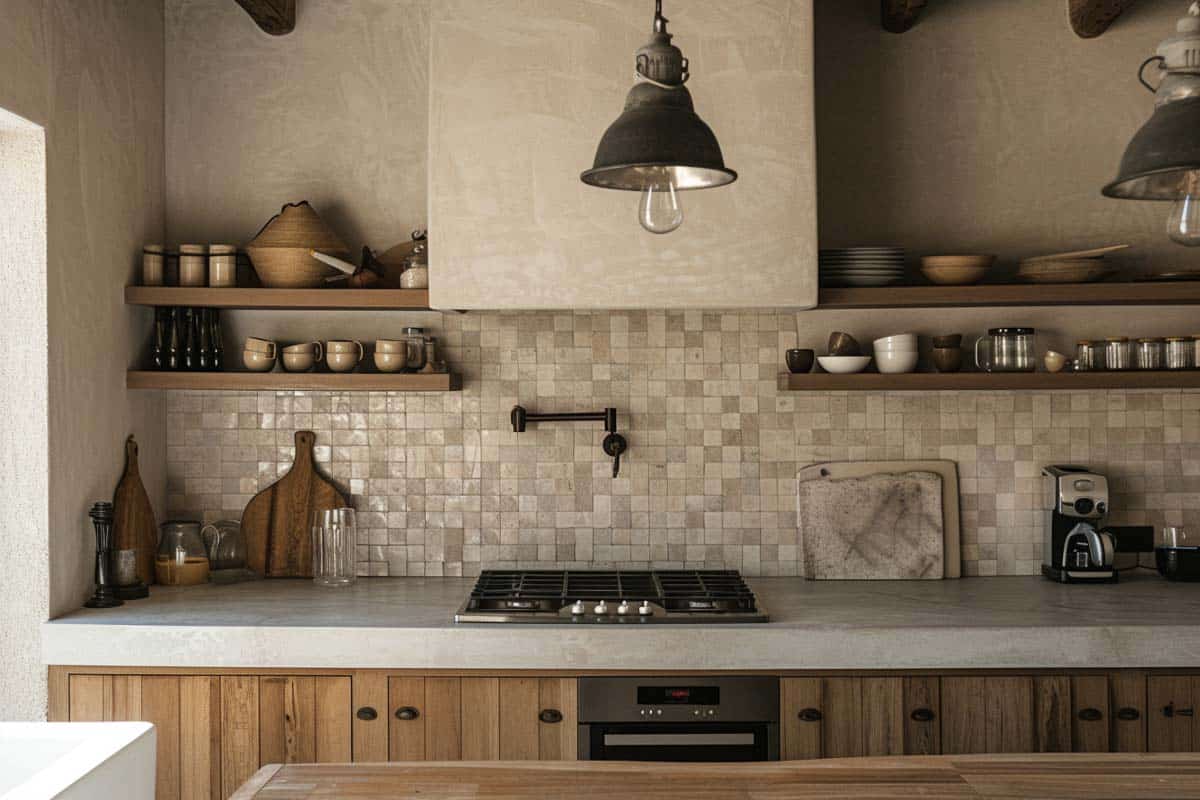
Zellige tiles don’t require grout since the beveled profile allows them to be laid flushed against each piece. You might want to have a thin line of grout to show in your backsplash since there are colored grouts that you can match to provide some extra elegance.
Most zellige tile products allow 1/16 inch spacing to fill any gaps or 1 to 2mm. Usually, a liquid grout is used that is recommended by your tiling supplier. Make sure to wipe off any excess grout that might have seeped through the surface. The advantage to still having grout is it can facilitate movement, preventing the materials from cracking.
Is Zellige Hard to Clean?

There’s a contrasting opinion on whether Zellige tile backsplash is hard to maintain. While it’s true that the crevices and undulating surface can accumulate grime and dirt, traditional styles have a hard glazed surface that’s impervious to stains.
This means it’s easy to wipe off dirt, and you can use mild soup with warm water or typical cleaning solutions to soften hardened debris or grime. It is also unlikely for handmade zellige tiles to show scratches because of the hard coating, so you can use a brush with medium hardness. On the other hand, most offered on the market are matte-finished or unglazed.
These are porous and can accumulate dirt easily. The bottom line is that whatever type of tile backsplash you have, regular maintenance is needed to prevent hardened dirt or grime from accumulating. Expansive Zellige tile installation can hire a professional cleaning company to clean your backsplash instead.


